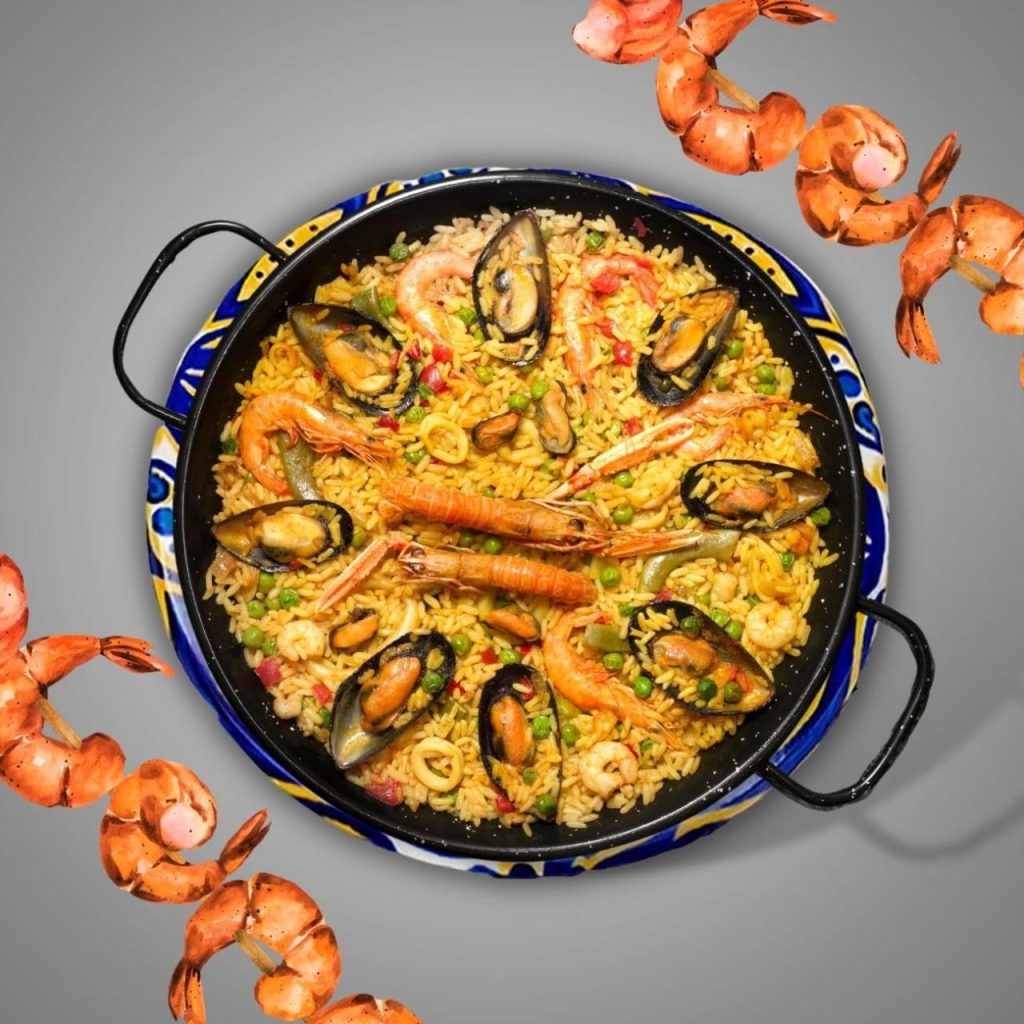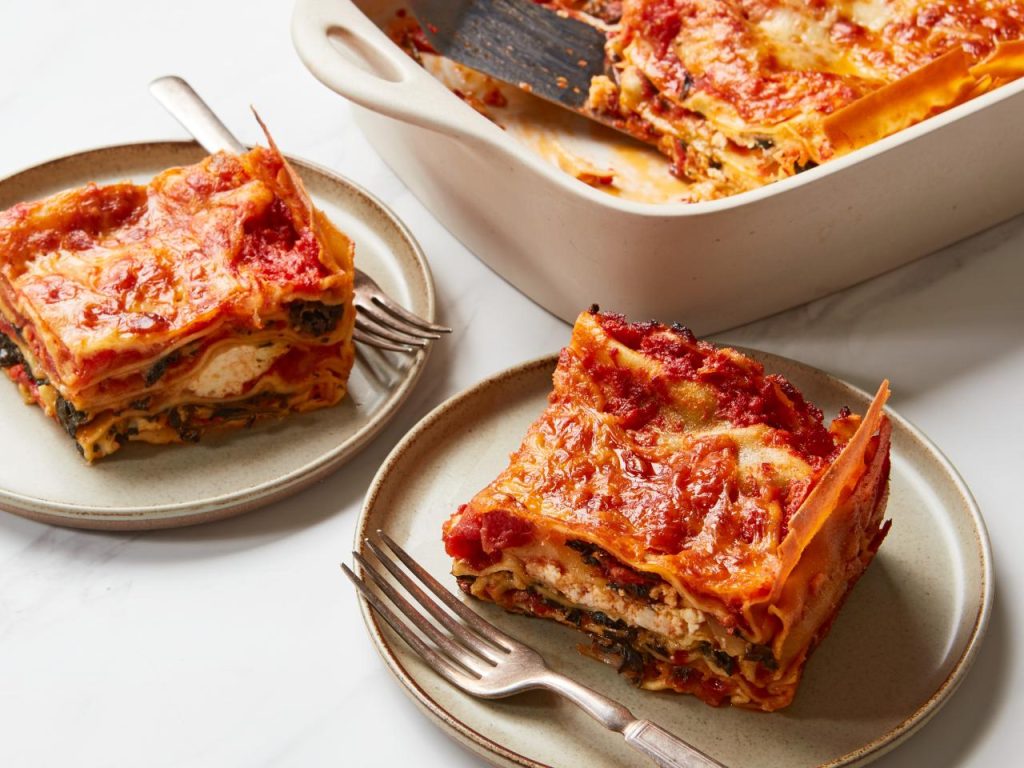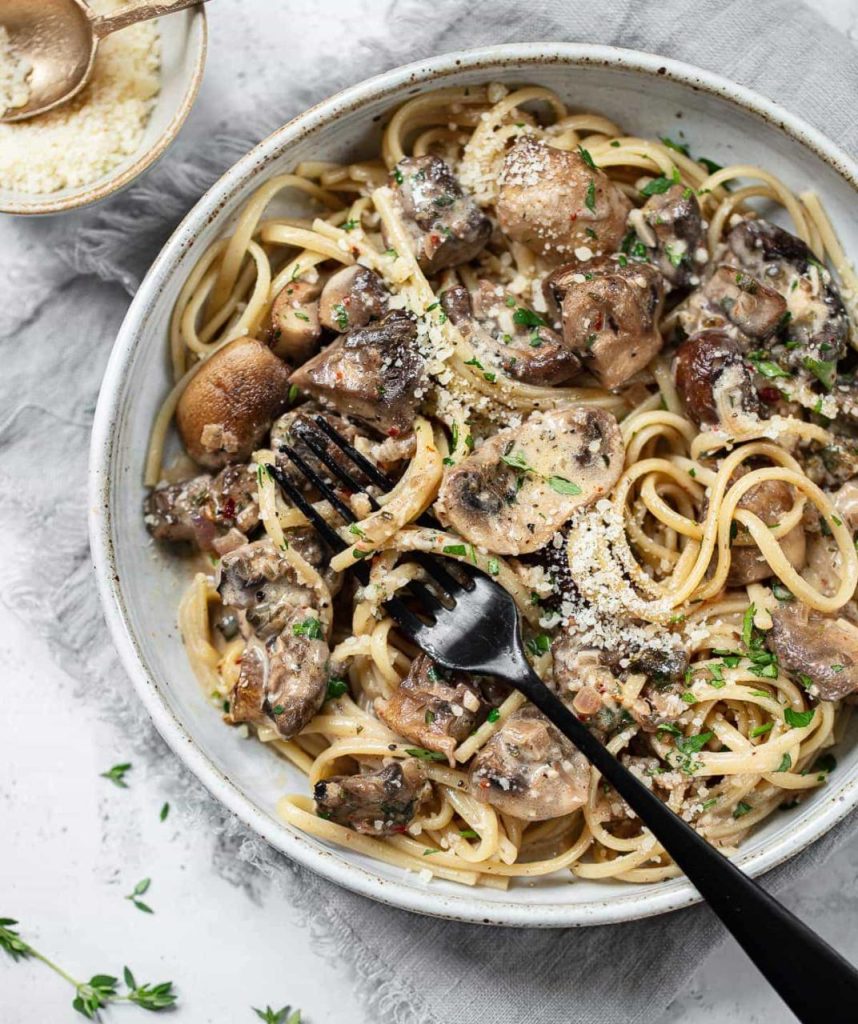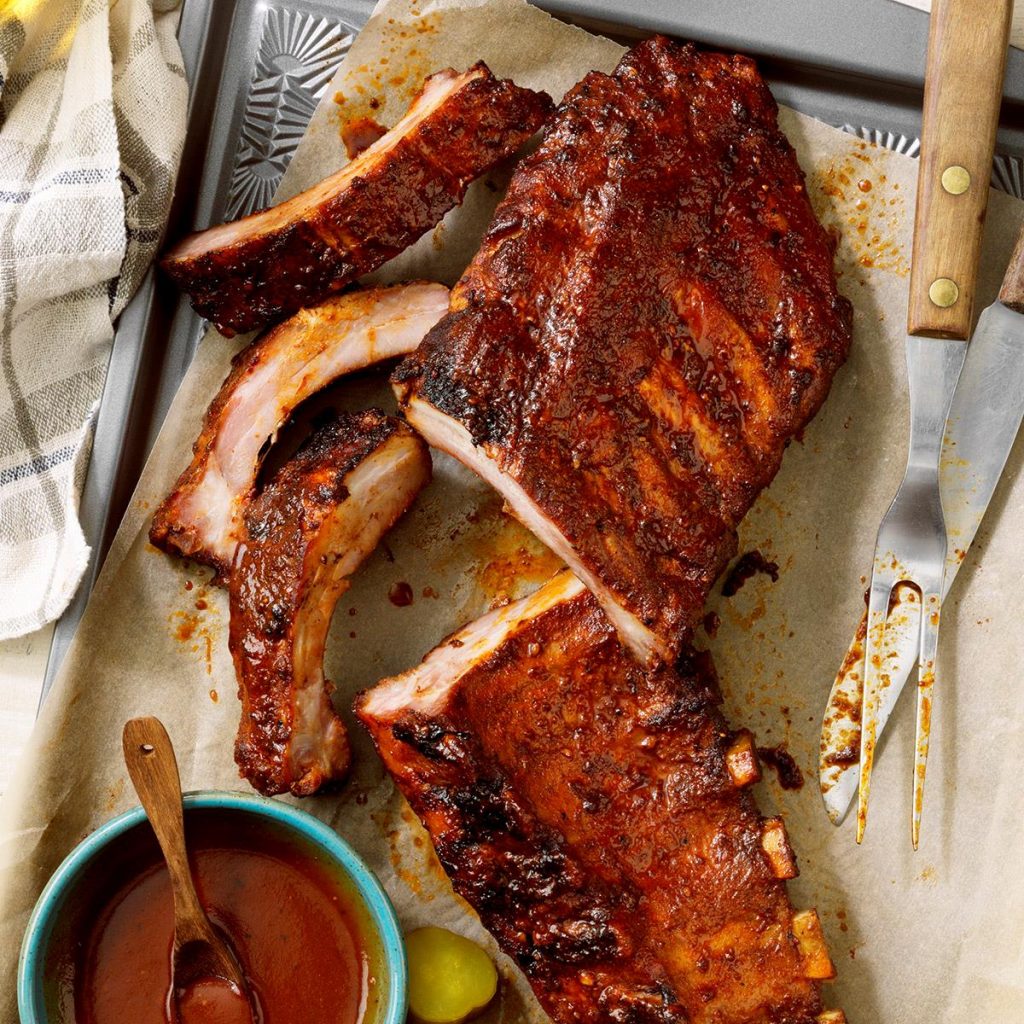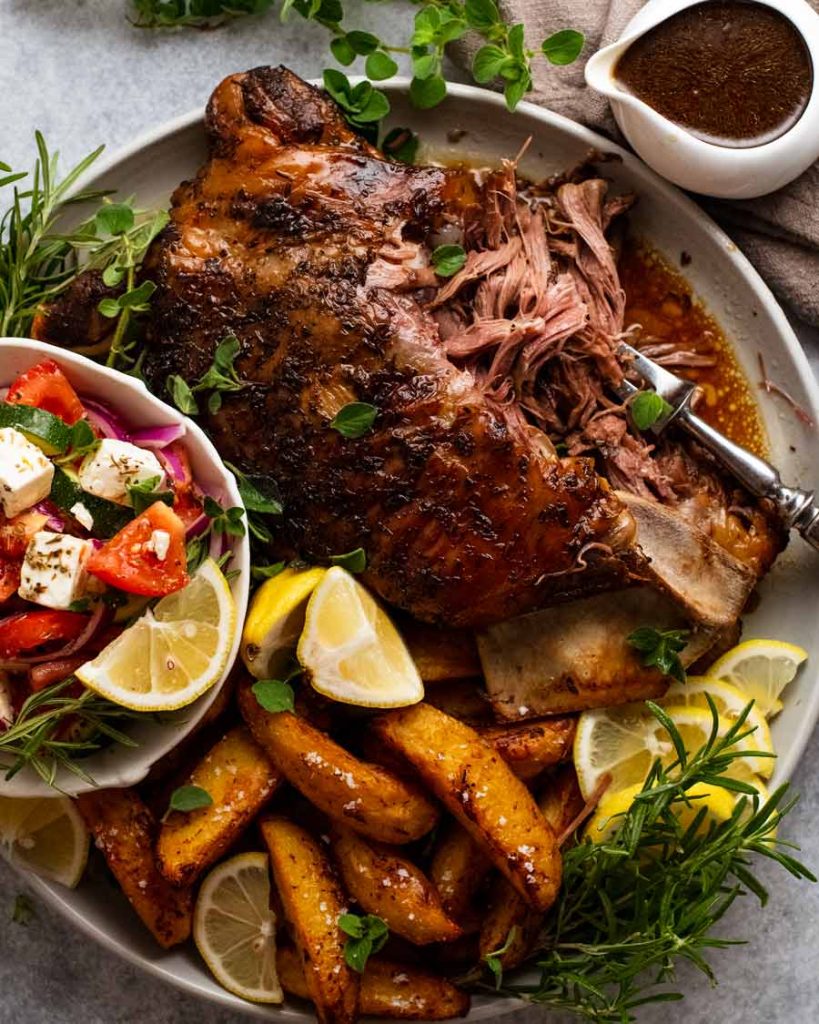Every dish tells a story, a tale of culture, tradition, and love. It’s not just about the ingredients or the method, but the emotions and memories that are stirred with every bite. One such dish that has etched a special place in my heart is the vibrant and flavorful “Paella”. Today, I invite you to join me on a culinary journey to Spain, as I recount my authentic experience with this iconic dish.
Paella Recipe
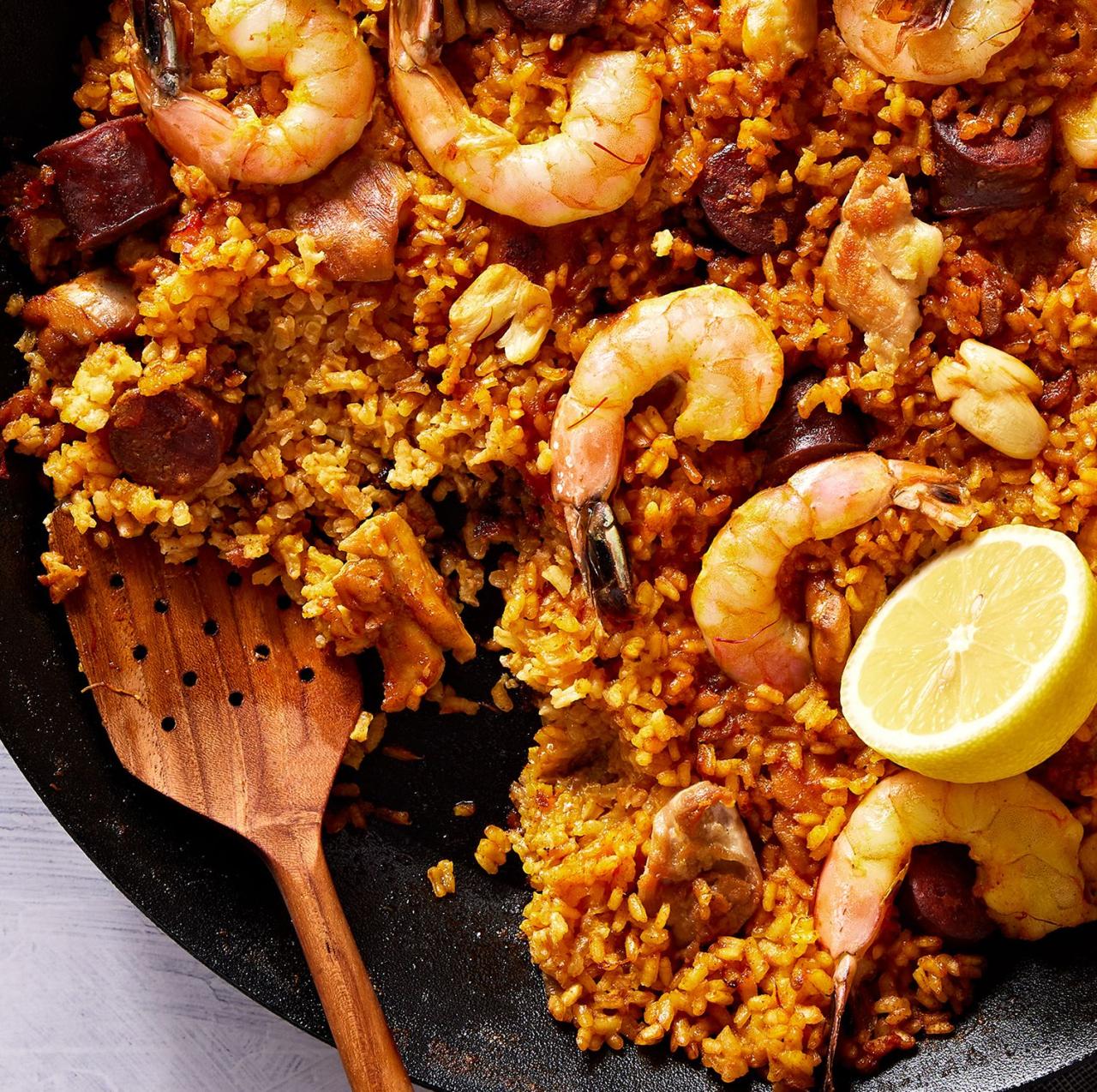

Paella recipe
Equipment
- 1 frying pan
Ingredients
- * 300 gr langkorrelrijst
- * 1.5 dl olive oil
- * 3 onions
- * 2 teentjes garlic
- * 2 l chicken soup
- * 6 kippenboutjes
- * 300 gr thin pig flesh
- * octopus rings
- * chorizoworst
- * red and green pepper
- * 150 gr diepvrieserwten
- * saffron
- * turmeric
- * pepper
- * salt
- * 200 gr pink shrimps
- * 1 kilogramme mussels
- * 6 crawfish or gamba's
- * 1 lemon
Instructions
- Paprikas, onions and garlic cut grof
- - Cut Chorizoworst in discs
- - cut pig flesh in cubes
- - Heat olive oil in frying pan and cut vegetables and garlic burns
- - Obtain from the pan and kippenboutjes, pig flesh, also sear chorizo and calamares
- - Heat olive oil in large pot 1 dl and glassy bake the rijst
- - Vegetables and flesh at the rijst joints and onderzetten with soup
- - Add Kruiden and let cook approximately 15 minutes gently. After 10 minutes mussels and crawfish add
- - Add shrimps after the kooktijd
- Presentation:
- Paella presents in deep dish or paella pan. Decorate with mussels, crawfish, parsley and lemon.
- Serve with salad separately.
Video
About Paella
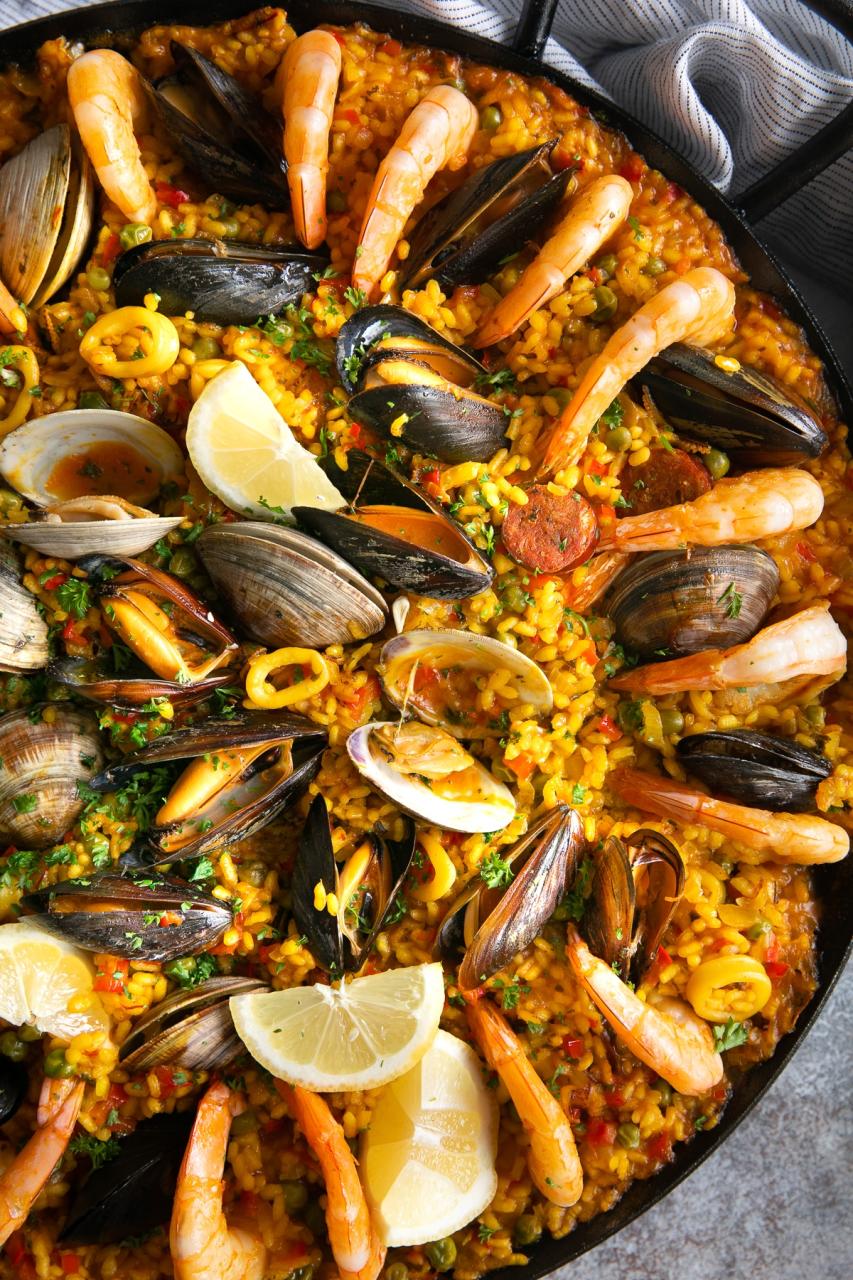
In the sun-drenched landscapes of Valencia, I found myself captivated by the allure of Paella. This traditional Spanish dish, brimming with the flavors of the sea and the earth, encapsulates the spirit of Spanish cuisine. With its colorful medley of rice, saffron, vegetables, and a variety of meats or seafood, Paella is a feast for both the eyes and the palate. It’s a dish that celebrates community, shared around a large pan, each spoonful bursting with robust flavors.
Cooking Tips
- Use Bomba rice if possible. This short-grain rice absorbs the broth well, resulting in a flavorful dish.
- Saffron is key. It gives Paella its distinctive yellow color and unique flavor.
- Cook the Paella in a wide, shallow pan to ensure even cooking of the rice.
- Don’t stir the rice once it starts cooking. This allows the bottom layer to caramelize and form the coveted ‘socarrat’.
- Use fresh, high-quality ingredients. The taste of the Paella heavily relies on the quality of its components.
Serving Suggestions
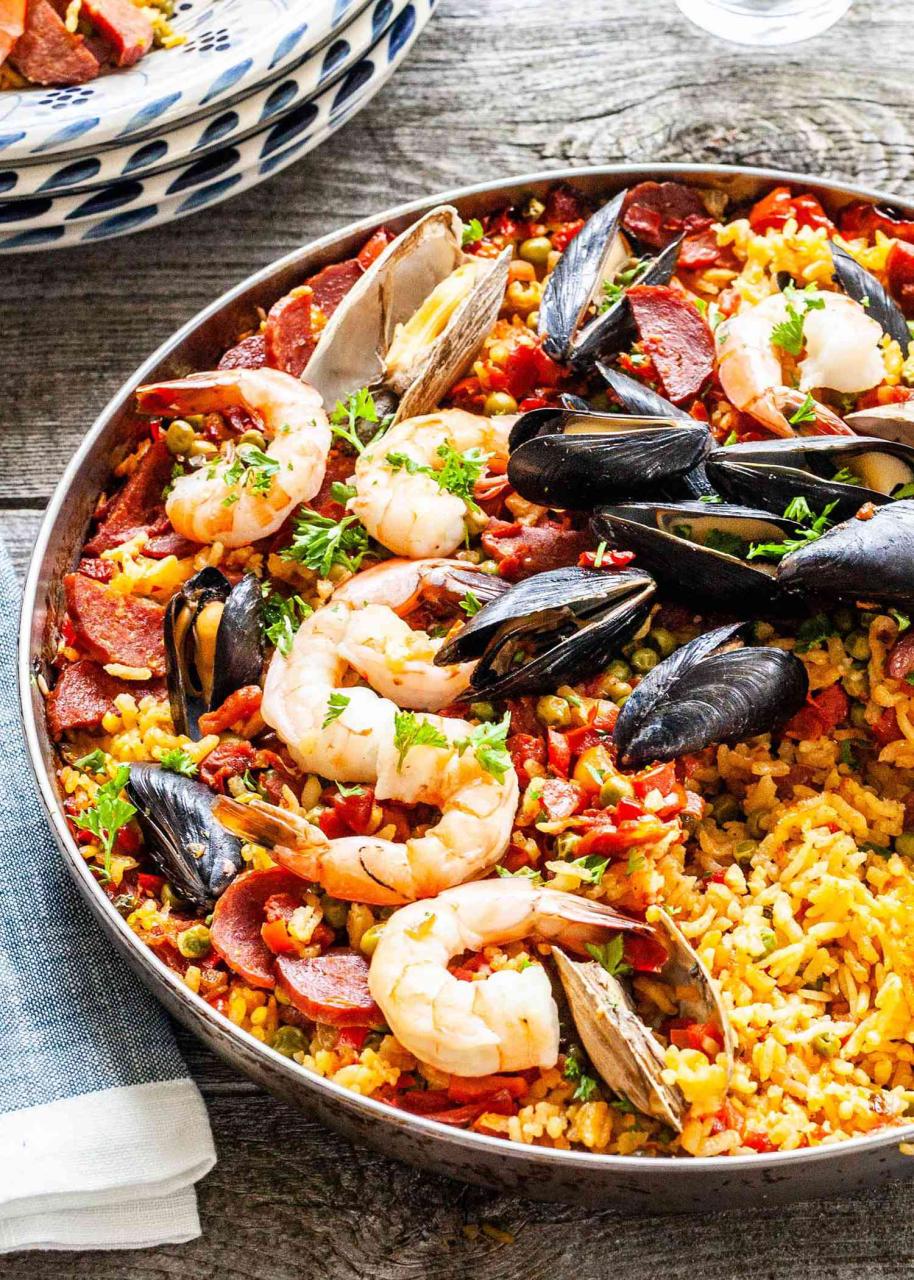
- Serve the Paella straight from the pan, allowing everyone to dig in and enjoy the communal experience.
- A refreshing Spanish sangria pairs wonderfully with the hearty Paella.
- A side of crusty bread can be used to mop up the flavorful juices.
- A simple salad with a citrusy dressing complements the rich flavors of the Paella.
- For dessert, a serving of flan or churros would round off the Spanish meal perfectly.
FAQs
- What type of meat can I use in Paella?
- Traditional Valencian Paella uses rabbit and chicken. However, you can also use seafood or a mix of different meats.
- Can I make a vegetarian Paella?
- Absolutely! You can load it up with a variety of vegetables like bell peppers, artichokes, and peas.
- What if I can’t find Bomba rice?
- You can substitute it with other short-grain rice varieties like Arborio or Calasparra.
- Can I cook Paella in a regular frying pan?
- While a traditional Paella pan is recommended, you can use a large, shallow frying pan as an alternative.
- How do I achieve the ‘socarrat’?
- The key is to not stir the rice once it starts cooking. This allows the bottom layer to caramelize and form the ‘socarrat’.
Conclusion: My encounter with Paella was more than just a culinary experience; it was a cultural immersion. It taught me about the Spanish way of life, their love for food, and their sense of community. Cooking Paella is not just about following a recipe, but about embracing the spirit of sharing and celebration that it embodies. So, I encourage you to embark on this Spanish culinary journey, savor the vibrant flavors of Paella, and let it carve a special place in your own gastronomic story.

